Acoustic Guitars Guide
Body type
There are several common body types, each with its own unique characteristics. The dreadnought body type is one of the most popular and produces a balanced sound with good volume projection. A great option in this body type is the Martin D-28, renowned for its deep bass response and rich tones. On the other hand, if you're looking for a more comfortable playing experience, the concert body type, also known as "folk" or "parlor" guitars, might be a better fit. The Taylor 914ce is a fantastic choice in this category, offering a warm and balanced tone with great clarity and playability. Lastly, those seeking a guitar with a smaller body type for easy travel or a unique tone, the Ovation Applause Balladeer with its bowl-shaped back provides a distinctive sound with pronounced mid-range frequencies. Whether it's the powerful dreadnought, the comfortable concert, or the unique design of smaller bodies, there are different body types to suit every guitarist's needs and preferences.
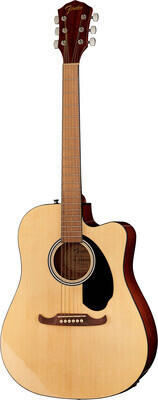
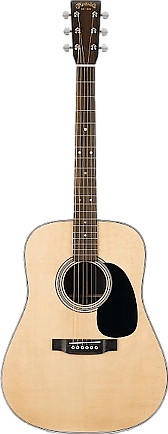
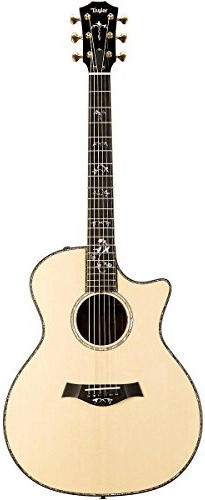
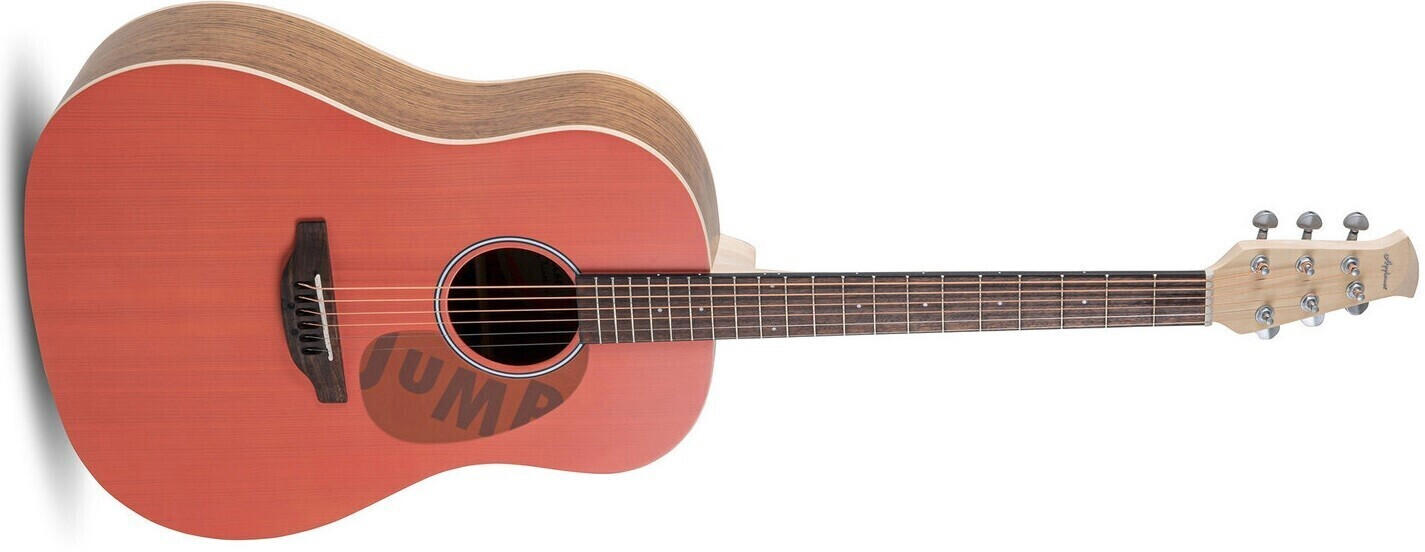
Type of wood used
Different types of wood produce different tones and characteristics, so it's crucial to find one that suits your playing style and preferences. For example, the Yamaha FG800 Solid Top Acoustic Guitar features a solid spruce top, which provides a bright and clear sound with excellent projection. Another option is the Taylor GS Mini Mahogany Acoustic Guitar, renowned for its solid mahogany top that offers a warmer and more focused tone with rich midrange. Additionally, the Martin D-28 Dreadnought Acoustic Guitar showcases a solid Sitka spruce top, delivering a balanced and powerful sound with superb clarity. These different wood options provide a variety of tonal signatures, ensuring you can find the perfect acoustic guitar to match your musical taste.



Size (adult or child size)
If you are looking for a child-size guitar, some options to consider are the Yamaha JR1 3/4 Size Guitar or the Fender MA-1 3/4 Size Acoustic Guitar. These guitars are specifically designed for smaller hands and bodies, allowing young beginners to comfortably hold and play them. They feature shorter scale lengths, lighter weight construction, and narrower necks, making it easier for children to reach the frets and play comfortably. On the other hand, if you are an adult, you would be better off considering standard adult-size guitars such as the Taylor GS Mini or the Martin LX1E Little Martin. These guitars offer a full-size playing experience with their larger body and longer scale length, ensuring optimal sound projection and control.
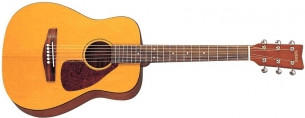

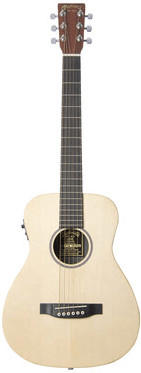
Neck profile and width
The neck profile refers to the shape and contour of the back of the guitar neck, while the width determines the distance between the strings. These factors can greatly affect playability and comfort for different players.
For those who prefer a thinner neck profile and narrower width, the Taylor GS Mini Mahogany could be a great option. With a slim and tapering shape, this guitar allows for easy finger movement and is ideal for players with smaller hands. Another option is the Martin D-15M, known for its low profile neck and narrow width, making it comfortable for players who desire a smooth playing experience.
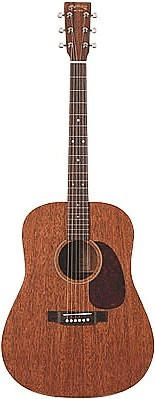
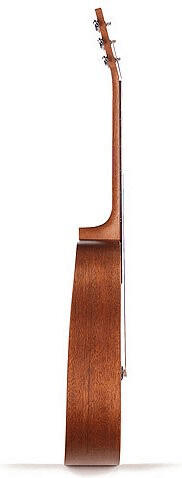

On the other hand, if you prefer a chunkier neck profile and wider width, the Gibson J-45 Standard might be suitable. This guitar offers a rounded "D" shape neck profile and wider string spacing, providing a robust feel and accommodating players who have larger hands. Similarly, the Fender CD-60SCE Dreadnought Acoustic-Electric Guitar has a wider neck and comfortable "Easy-to-Play" shape, perfect for players who desire a solid grip and smooth movement on the strings.
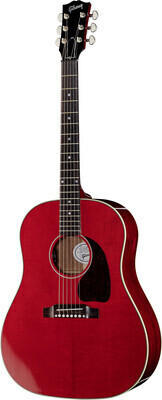
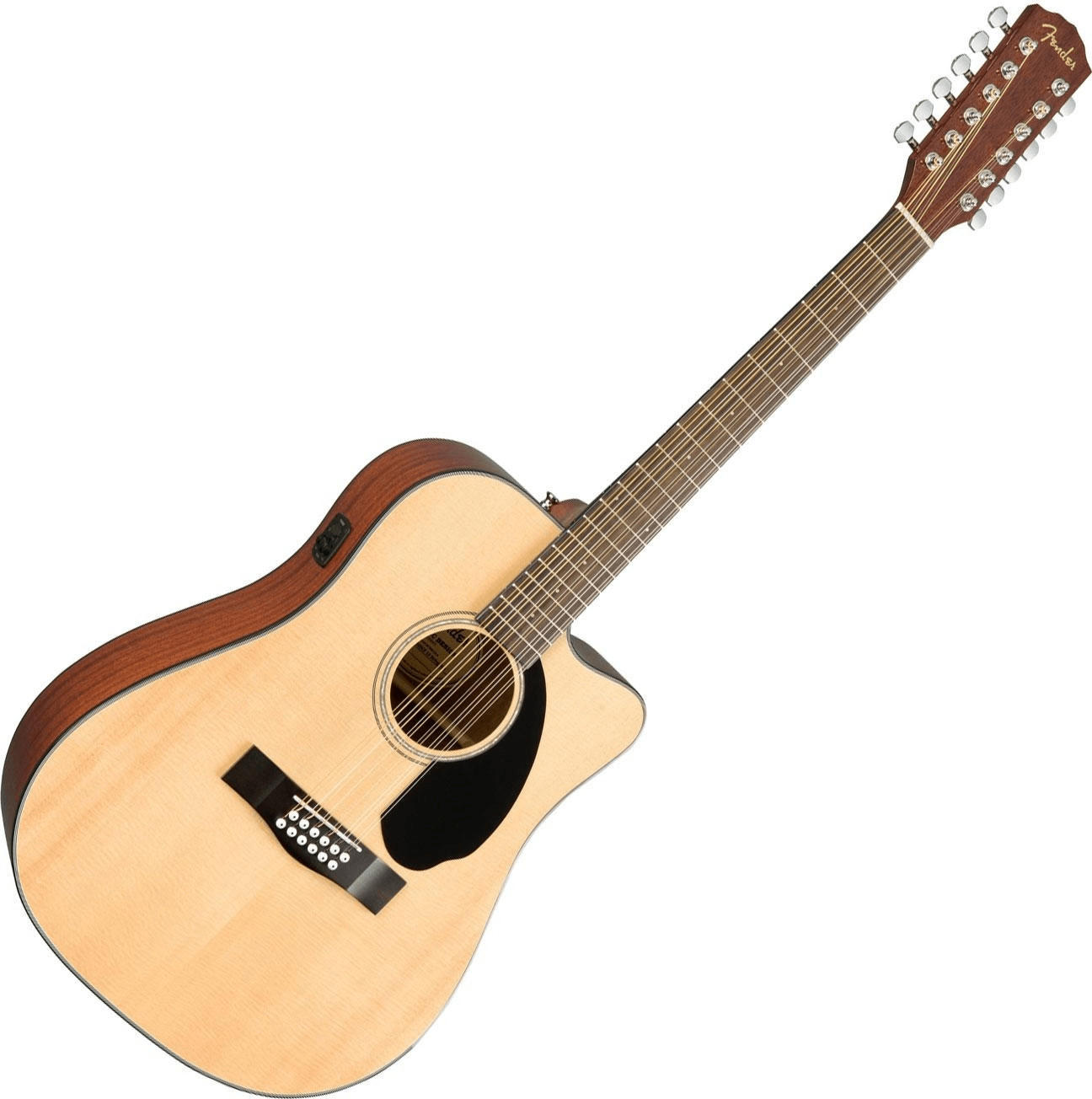
Fretboard material
The fretboard, also known as the fingerboard, is where your fingers press down on the strings to create different notes and chords. Different materials used for the fretboard can affect the sound, playability, and durability of the guitar.
Some common materials used for guitar fretboards include rosewood, ebony, and maple. Rosewood is a popular choice known for its warm tone and smooth feel. It is commonly used in high-end guitars like the Taylor 814ce and the Martin D-28. Ebony, on the other hand, offers a brighter and more focused tone. It is often seen in guitars such as the Gibson J-45 and the Fender Eric Clapton Crossroads Signature. Maple fretboards provide a bright and snappy sound, favored by players looking for a more articulate tone. Many electric-acoustic guitars like the Yamaha FGX800C and the Ibanez Artwood AW54CE feature maple fretboards for enhanced performance.
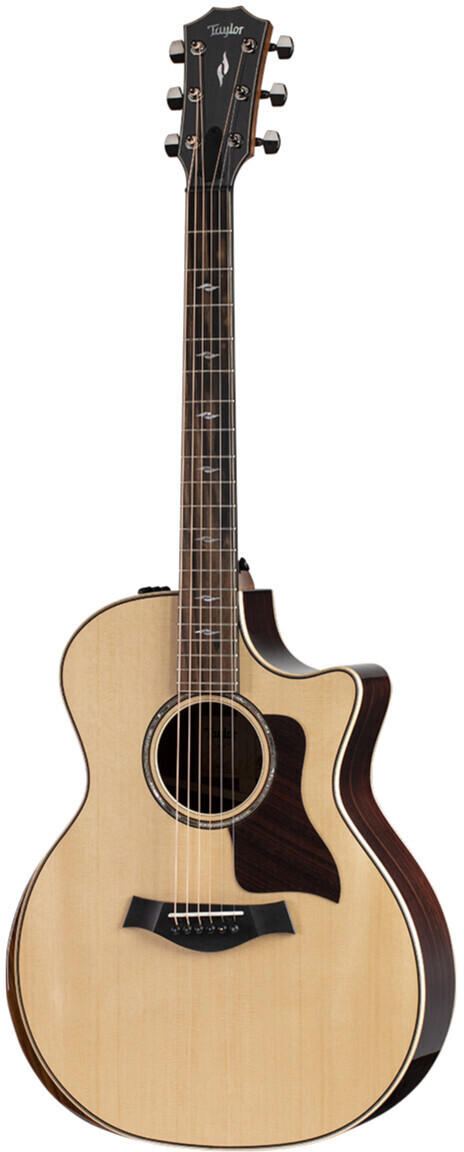


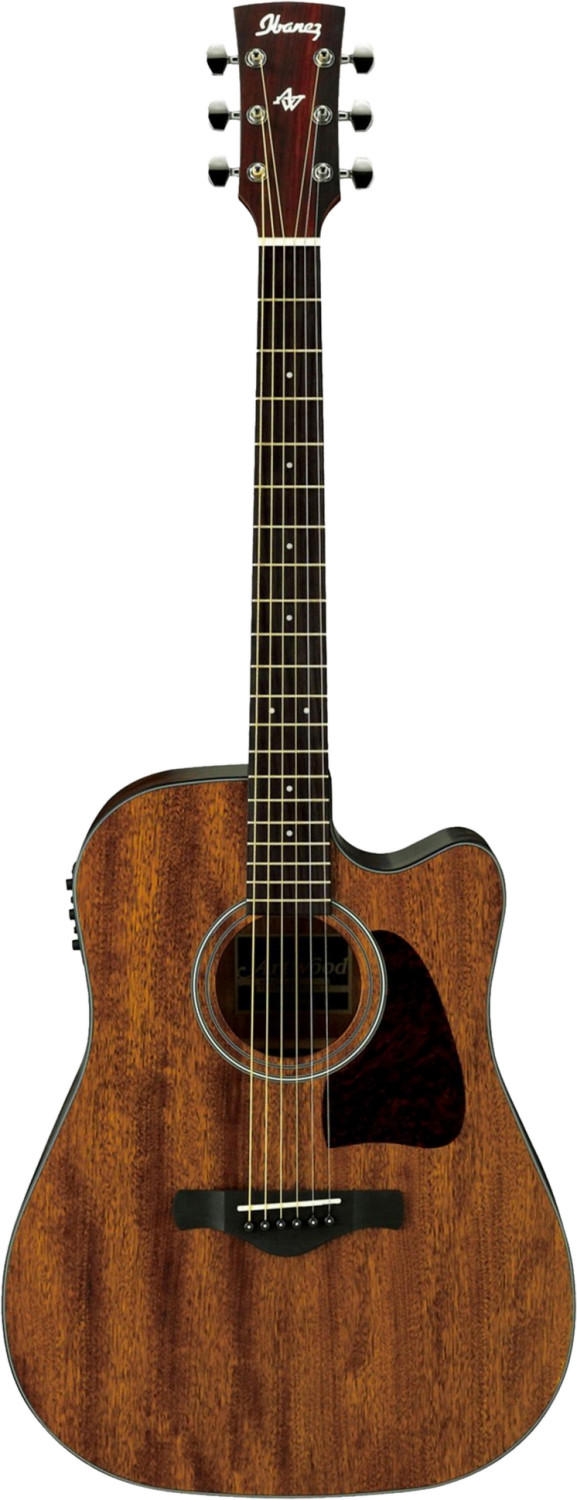
Ultimately, the choice of fretboard material will depend on personal preference and the desired sound for your acoustic guitar. Consider trying out guitars with different fretboard materials to determine which one suits your playing style and musical taste the best.
Number of frets
The number of frets determines the range and playability of the guitar. Most acoustic guitars have a standard of 18 to 20 frets, allowing players to access a wide variety of notes and chords. However, some guitars have extended ranges, such as the Epiphone Hummingbird Artist, which offers 20 frets for additional versatility. Another option is the Fender CD-60S All-Mahogany, which features 20 frets and is particularly suitable for beginners due to its comfortable playability. For those looking for even more frets to explore, the Taylor 814ce Deluxe V-Class Grand Auditorium is a high-end option with 20 frets and excellent craftsmanship.
Grouping by highest number of frets available:
- Guitars with 20 frets: Epiphone Hummingbird Artist, Fender CD-60S All-Mahogany.
- Guitars with more than 20 frets: Taylor 814ce Deluxe V-Class Grand Auditorium.
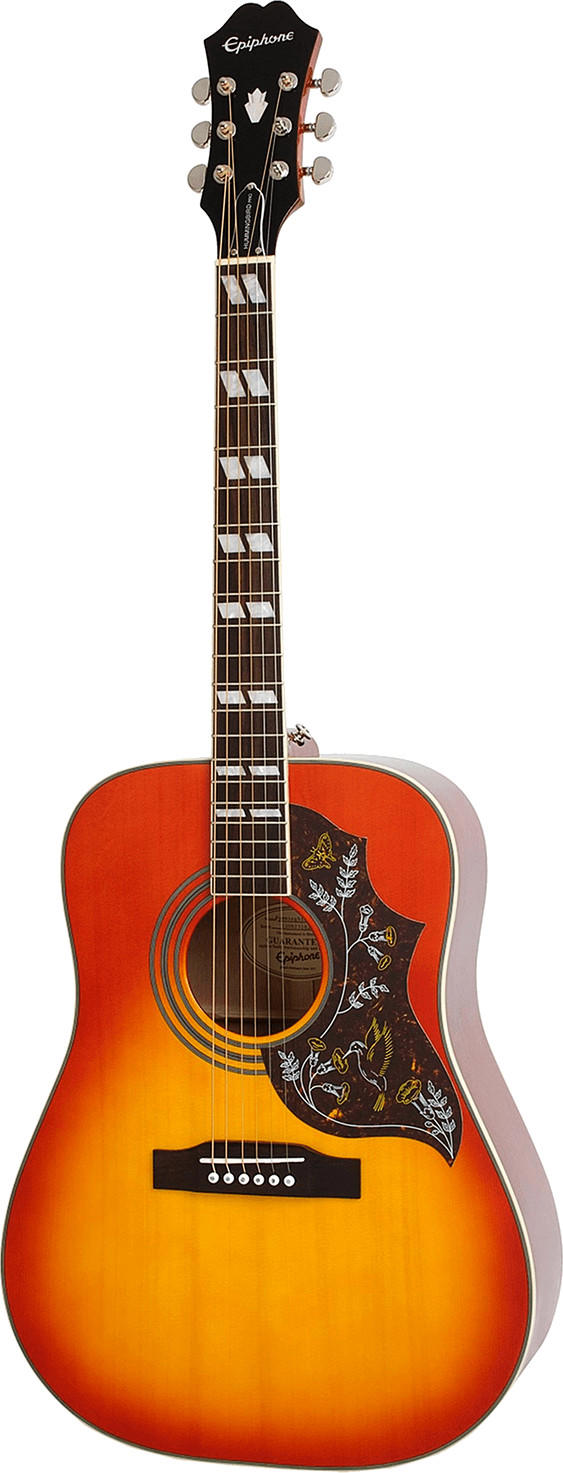
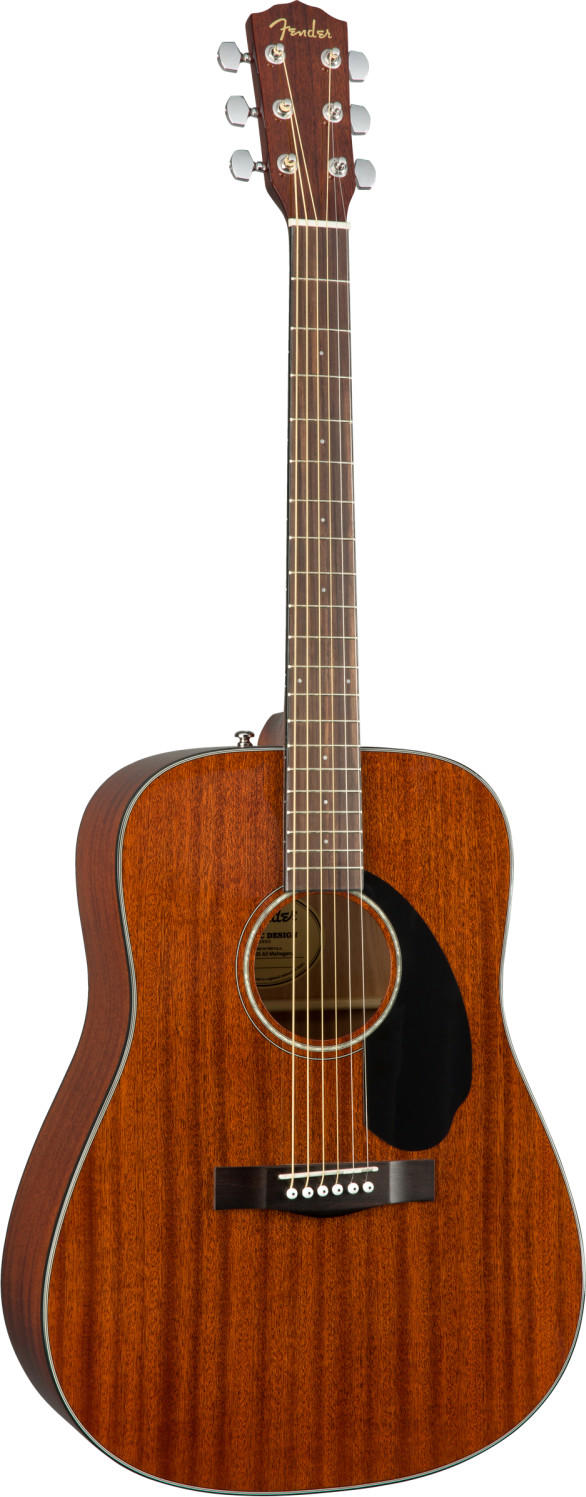

Scale length
The scale length refers to the vibrating length of the strings and affects the overall playability and sound of the instrument. Generally, longer scale lengths produce a richer tone and increased string tension, while shorter scale lengths provide easier fretting and a slightly brighter sound.
In the market, we can find acoustic guitars in different scale lengths. In the segment of shorter scale length guitars, the Taylor GS Mini Mahogany stands out as a popular choice. With a scale length of 23 1/2 inches, this compact guitar delivers a balanced tone and comfortable playability, making it perfect for travel or players with smaller hands. On the other hand, for those looking for a longer scale length, the Martin D-28 is highly regarded. It features a scale length of 25.4 inches, ensuring powerful projection and a warm, commanding tone. With iconic features such as a solid Spruce top and Rosewood back and sides, the Martin D-28 is a sought after choice among professionals and serious players.

Guitar top material
The top of the guitar, also known as the soundboard, has a significant impact on the instrument's tone and resonance. Different top materials have distinct qualities and characteristics. The most commonly used top materials in acoustic guitars are spruce and cedar. Spruce tops are known for their balanced and versatile sound, lending well to a variety of musical styles. One excellent option is the Taylor 214ce Grand Auditorium Acoustic-Electric Guitar, which features a solid Sitka spruce top. On the other hand, cedar tops are coveted for their warm and rich tones, making them ideal for fingerstyle playing. A popular choice with a cedar top is the Yamaha FG830 Tobacco Sunburst Acoustic Guitar. Finding the right top material for your acoustic guitar will depend on your personal preference and playing style.
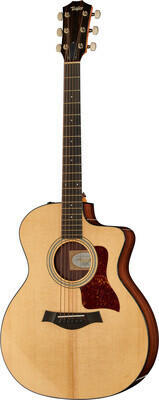
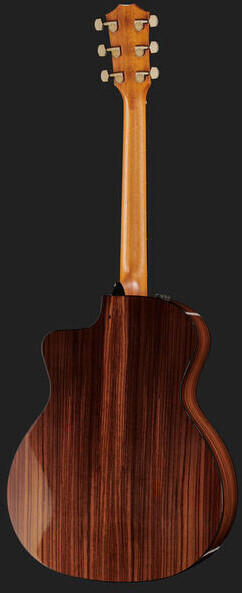

Back and sides material
This component plays a crucial role in determining the guitar's sound and overall tone. There are several common materials used for the back and sides, each with its own unique characteristics. For example, mahogany is known for delivering a warm, balanced tone with a strong midrange. A great representation of this is the Martin D-28 acoustic guitar, which features a solid East Indian rosewood back and sides, delivering a rich and full-bodied sound. On the other hand, guitars with a back and sides made from maple tend to have enhanced clarity and brightness. An excellent option in this category is the Taylor 814ce, which boasts solid flame maple back and sides, providing a crisp and articulate tone. Additionally, guitars featuring back and sides made from rosewood, such as the Gibson J-45, offer a deep, resonant tone with great sustain and rich harmonics, making them ideal for strumming and fingerpicking styles.
Different types of wood for the back and sides cater to varying preferences and playing styles, so it's beneficial to sample different materials and their corresponding guitars before making a final decision.


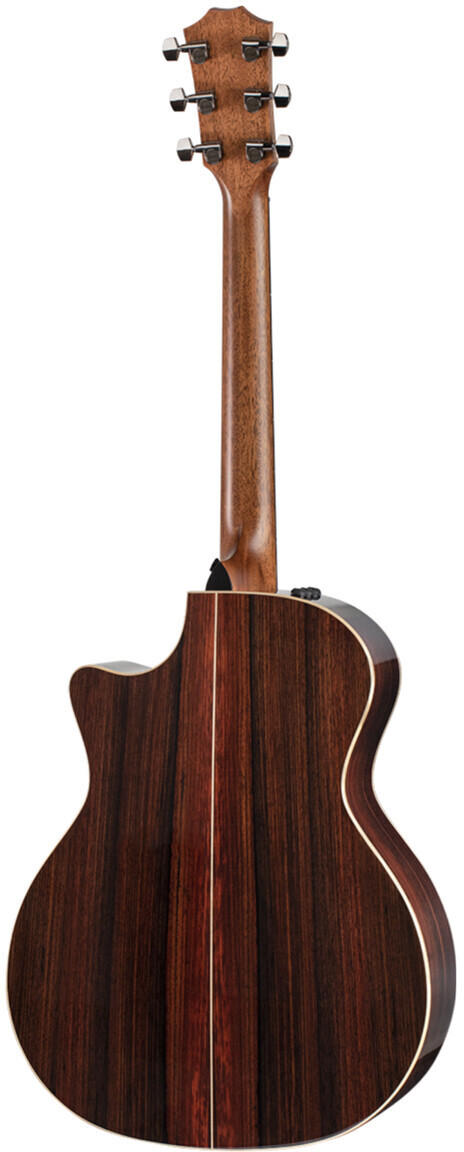
Bracing type
Bracing refers to the internal framework of the guitar that supports the top (soundboard) and enhances the instrument's sound projection and tone. There are various types of bracing, each producing a different sound. For example, the X-bracing pattern is commonly found in steel-string guitars and provides a balanced tone with great projection. A good option is the Martin D-28, which features forward-shifted, scalloped X-bracing that delivers a strong bass response along with clear treble notes. Alternatively, the fan-bracing seen in classical guitars offers a more delicate sound with a focus on warmth and sustain. One example is the Yamaha CG182C, featuring a fan-bracing pattern and a solid cedar top for a rich and mellow sound. Consider your preferred style and sound when choosing the right bracing type for your acoustic guitar.


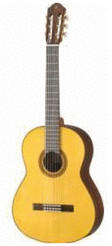
Finish type
The finish not only adds an aesthetic appeal to the instrument, but it also affects its tone and protection. Among the various finish types available on the market, nitrocellulose lacquer is known for its ability to enhance the guitar's resonance and maintain the natural sound of the wood. An example of an acoustic guitar with a nitrocellulose lacquer finish is the Martin D-28 Vintage Series Acoustic Guitar, which features a high-gloss vintage toner top, back, and sides.
Another commonly used finish type is polyurethane, which offers durability and resistance to scratches, making it suitable for musicians who travel or perform frequently. The Taylor 110e Acoustic-Electric Guitar is an excellent option with a polyurethane finish that provides both protection and a sleek look. Some Acoustic guitars also come with an open-pore finish, allowing the wood to breathe and vibrate more freely for a more resonant sound. The Yamaha FG820 Solid Top Acoustic Guitar is a prime example, showcasing an open-pore finish for a more organic and authentic tone. Overall, considering the finish type in the selection process is crucial as it not only affects the appearance but also the overall tone and protection of the instrument.

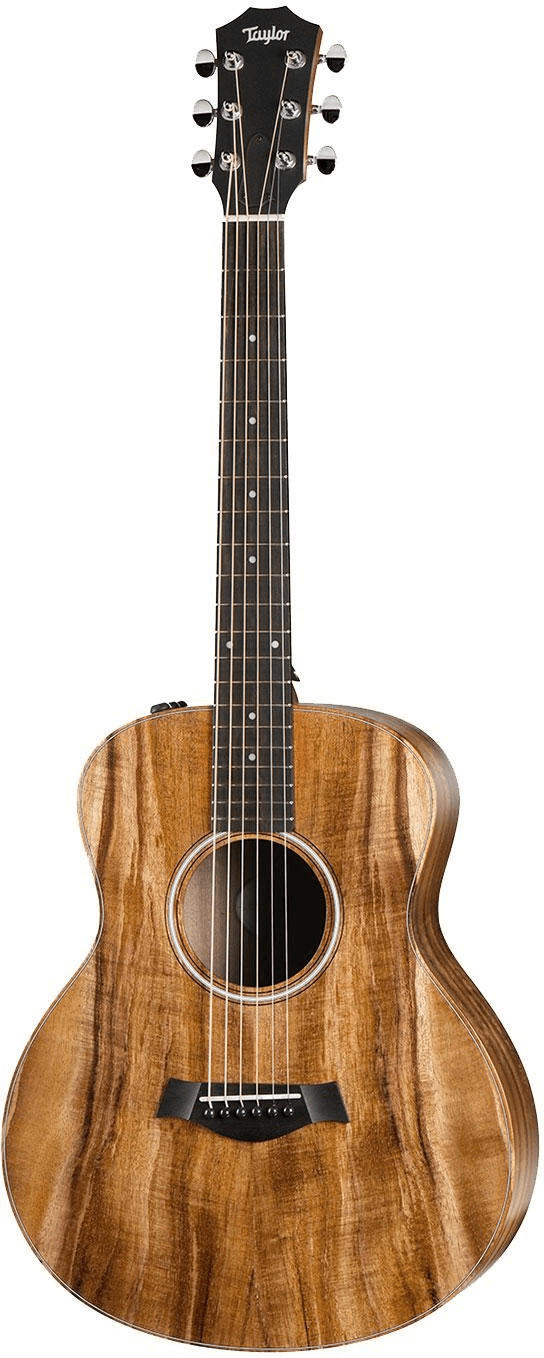
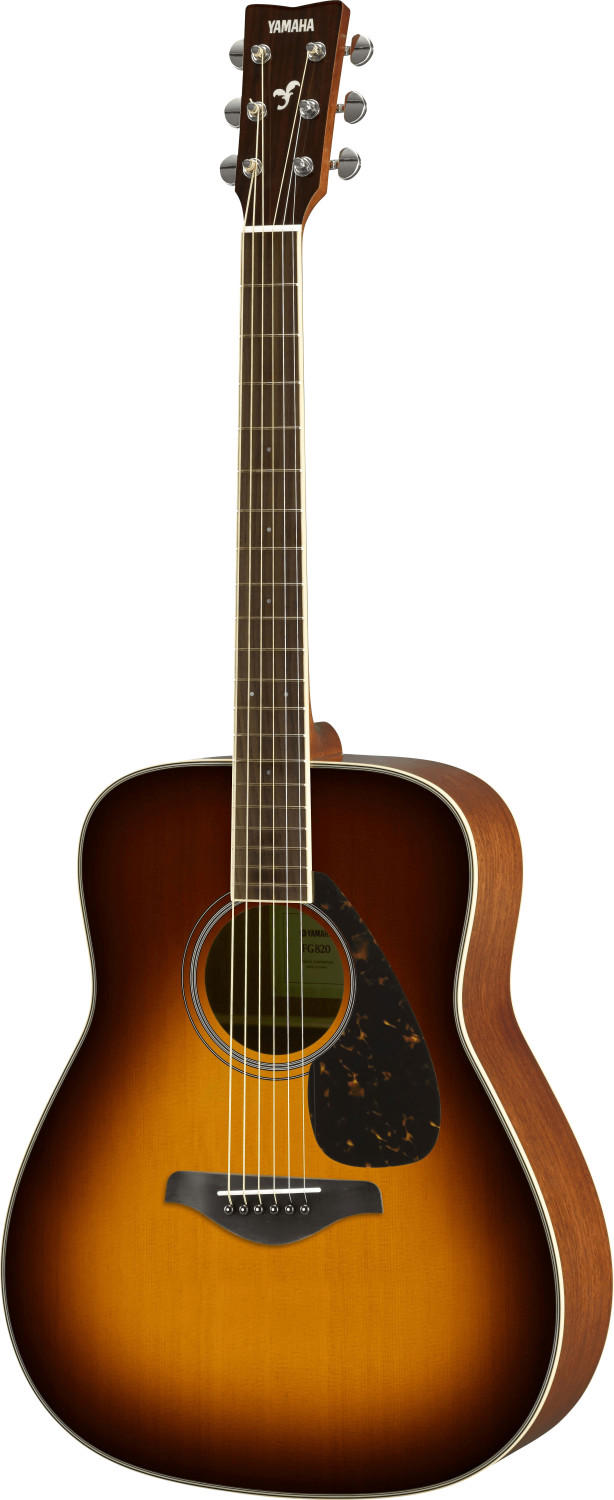
Sound projection
Sound projection refers to how well the guitar can project sound and fill a room or an outdoor space without losing its clarity or tone. This is particularly important for players who perform in larger venues or for those looking for a guitar with a more robust sound.
Some acoustic guitars that excel in sound projection are the Taylor 814ce and the Martin D-28. The Taylor 814ce is a grand auditorium guitar that features a solid Sitka spruce top and Indian rosewood back and sides, allowing for great projection and balance. It also comes equipped with Taylor's Expression System 2 pickup system, ensuring excellence in sound amplification. The Martin D-28, on the other hand, is known for its booming projection and rich tone. It boasts a solid Sitka spruce top and East Indian rosewood back and sides, providing a powerful sound that can be heard even in larger venues. These guitars are excellent choices for musicians seeking guitars with exceptional sound projection.



Tone quality
The tone of a guitar is a subjective aspect, and it largely depends on individual preference. However, the wood materials used in the construction of the guitar body play a significant role in determining the overall tone. For those seeking a bright and crisp tone, guitars with a solid spruce top, like the Taylor 214ce Grand Auditorium Acoustic-Electric Guitar, are a great option. Conversely, if a warmer and fuller tone is preferred, guitars made from mahogany, such as the Gibson Hummingbird Acoustic Guitar, could be worth considering. Each of these guitars offers distinct tonal characteristics, allowing players to choose based on their desired sound preference.


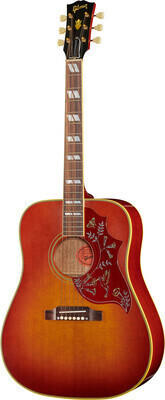
Playability
Playability refers to how comfortable and easy it is to play the instrument. One important aspect of playability is the neck profile, which determines the shape and thickness of the guitar's neck. Thin neck profiles, such as the 'SlimTaper' neck of the Epiphone DR-100, are generally more favorable for beginners and players with smaller hands, as they allow for easy chord formation and smooth movement up and down the fretboard.
Furthermore, the action, or the distance between the strings and the fretboard, greatly affects playability. Lower action, like that found on the Taylor 214ce, allows for easier and faster fretting without putting strain on your fingers. This results in a more comfortable playing experience and reduced hand fatigue during long practice sessions. Additionally, having a guitar with a cutaway body shape, like the Fender CD-60SCE, can provide better access to higher frets, enabling effortless playing in both the lower and higher regions of the fretboard. Lastly, consider the fingerboard radius, which refers to the curvature of the fretboard. Martin D-28, for example, features a vintage-style 16-inch fingerboard radius which offers superb comfort for chord playing and versatile fingerpicking style.
Segment:
- Beginners:
Yamaha FG800, Ibanez AW54OPN - Intermediate: Seagull S6 Original, Taylor 114ce
- Professional:
Gibson J-45, Martin D-15M

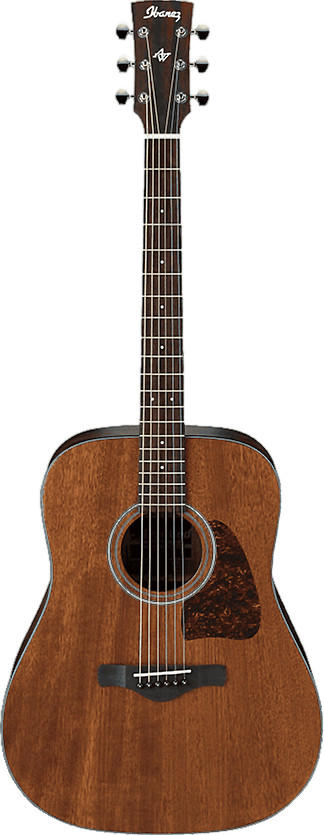
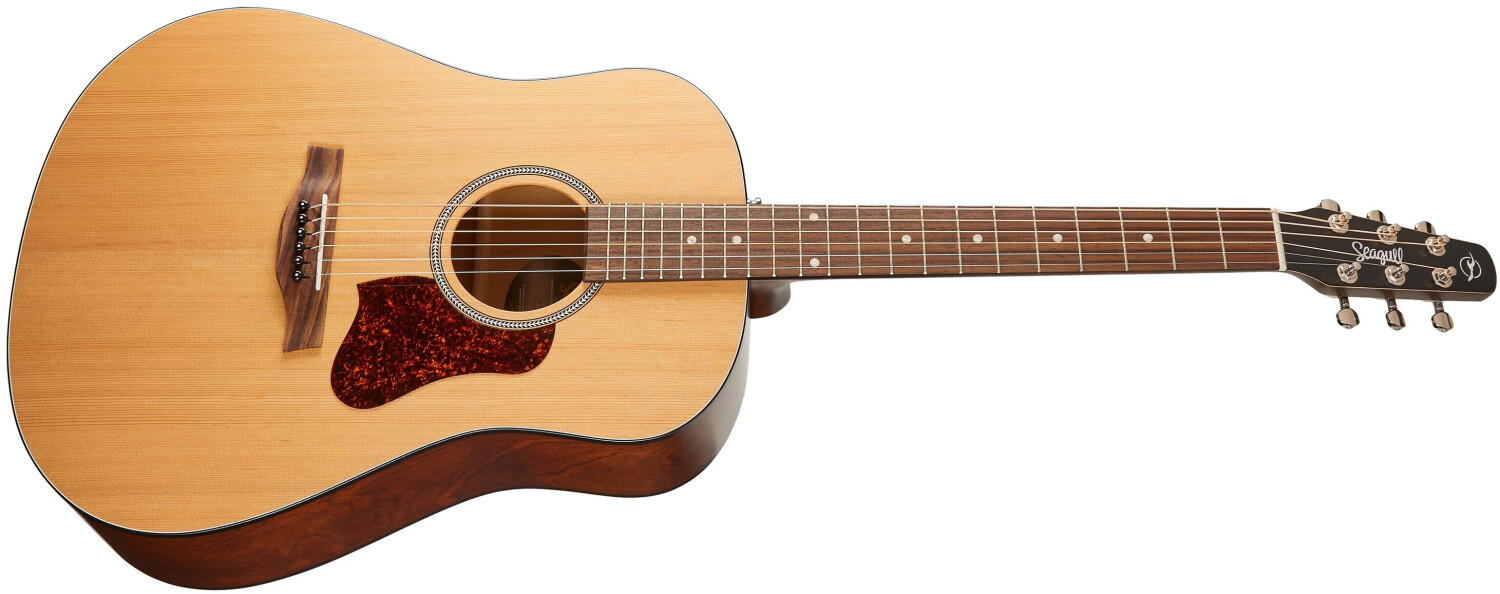
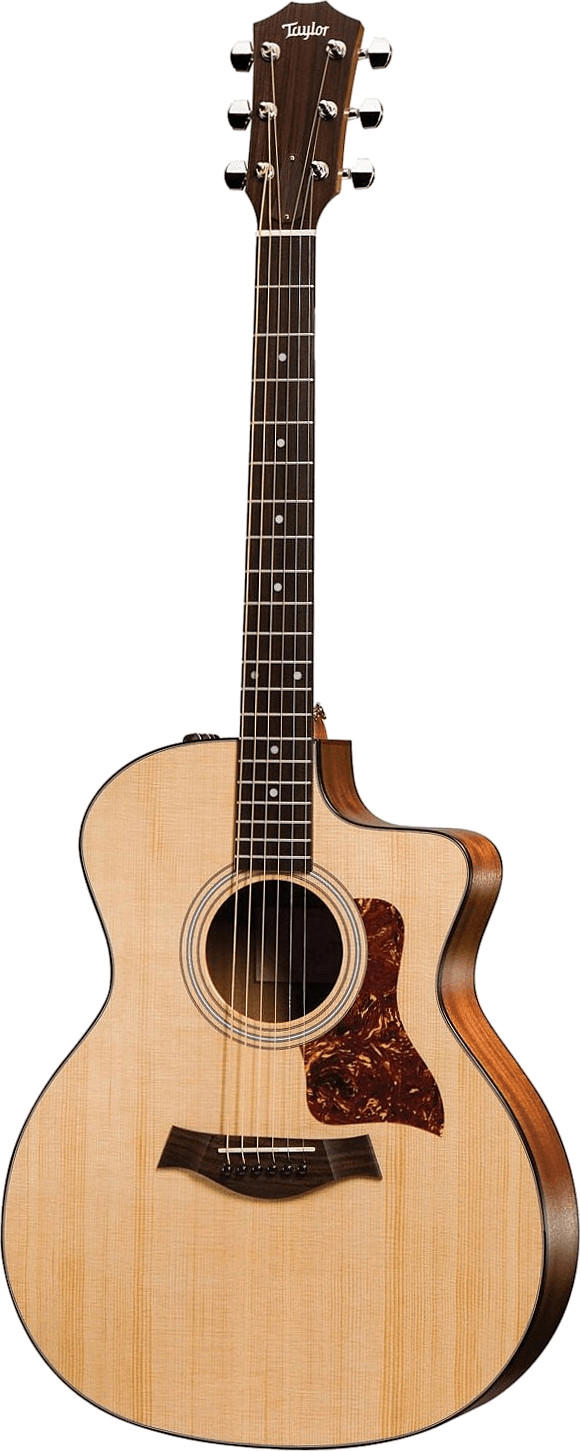

Action (string height)
The action refers to the distance between the strings and the fretboard, and it has a significant impact on playability and sound quality. Typically, a lower string height offers easier playability and allows for faster, more comfortable fretting, particularly for beginners or those with smaller hands. On the other hand, a higher string height can produce better sustain and resonance.
When it comes to guitars with adjustable action, the Taylor 814ce is worthy of consideration. This renowned model features Taylor's "Advanced Performance" bracing and a unique V-Class bracing system, resulting in improved sustain and volume. The guitar also boasts a slim, ergonomic neck profile and precision-milled frets, allowing for effortless playability with lower string height settings.


For those seeking guitars with a lower, standard action out of the box, the Yamaha FG800 is a great choice. The FG series guitars are known for their outstanding playability and tone, and the FG800 is no exception. It comes with a solid spruce top and scalloped bracing, offering a balanced and vibrant sound. The slim neck profile ensures a comfortable playing experience, and the adjustable truss rod allows for slight adjustments to the string height.
Intonation accuracy
Intonation refers to the accuracy of pitch across different frets on the guitar neck. A guitar with good intonation will ensure that each note sounds in tune, regardless of where it is played.
There are a few factors that contribute to intonation accuracy, such as the quality of the guitar's bridge, saddle, and tuning pegs. Additionally, some guitars come with features like compensated saddles, which help improve the intonation further.
In terms of acoustic guitars with excellent intonation accuracy, two standout options are the Taylor 814ce V-Class and the Martin D-28. The Taylor 814ce V-Class features a unique brace design that enhances intonation and sustain, along with a precise compensated saddle. On the other hand, the Martin D-28 is well-known for its exceptional intonation across the fretboard. Both these guitars offer exceptional tonal quality and playability, making them great options for musicians seeking top-notch intonation accuracy.



String type
The strings you select can have a significant impact on the sound and playability of the instrument. There are typically two main categories: steel strings and nylon strings. Steel strings, also known as "acoustic" or "western" strings, produce a brighter, twangy tone and are more commonly used in genres like country, folk, and rock. They also tend to be a bit tougher on the fingers due to their higher tension. Some excellent options for steel-string acoustic guitars are the Fender CD-60S and the Yamaha FG800, both having steel strings with phosphor bronze coating for enhanced durability and tonal richness. On the other hand, nylon strings are often referred to as "classical" strings and produce a mellow, warmer tone. They are frequently used in classical and flamenco music. For those interested in trying out a nylon-stringed acoustic guitar, the Cordoba C3M and the Yamaha CGS103A are highly recommended for their quality craftsmanship and great playability.
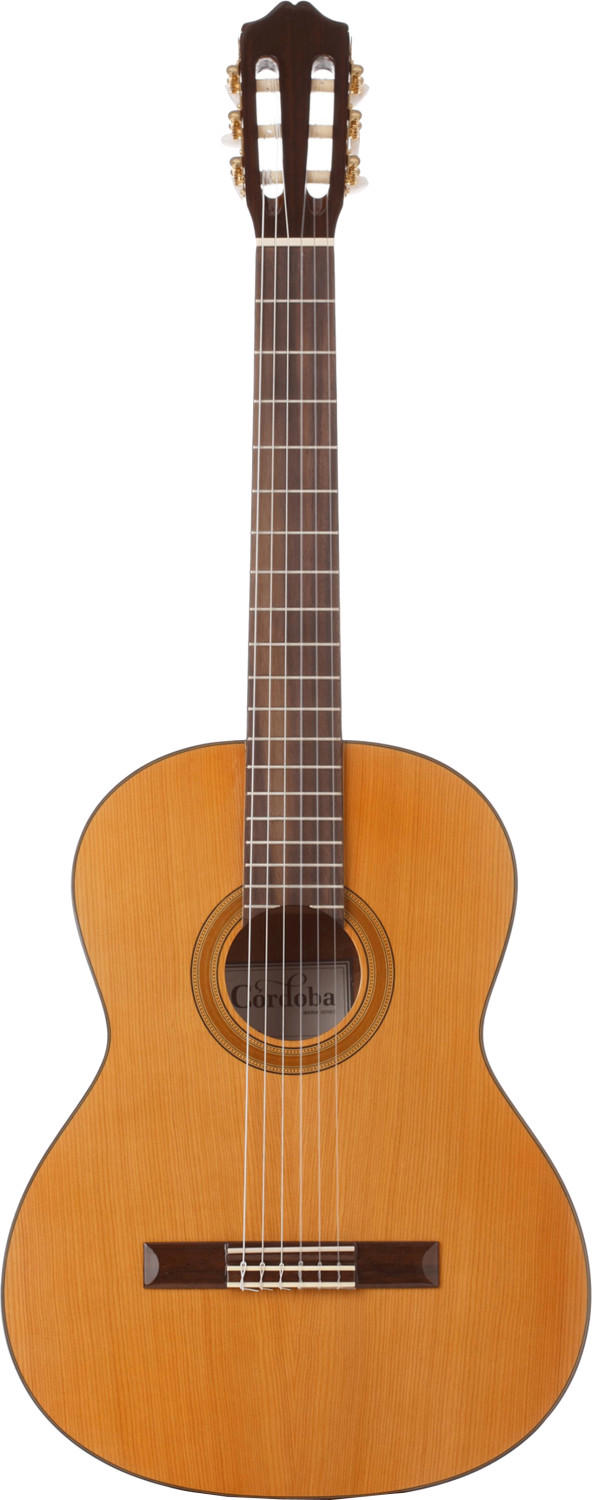
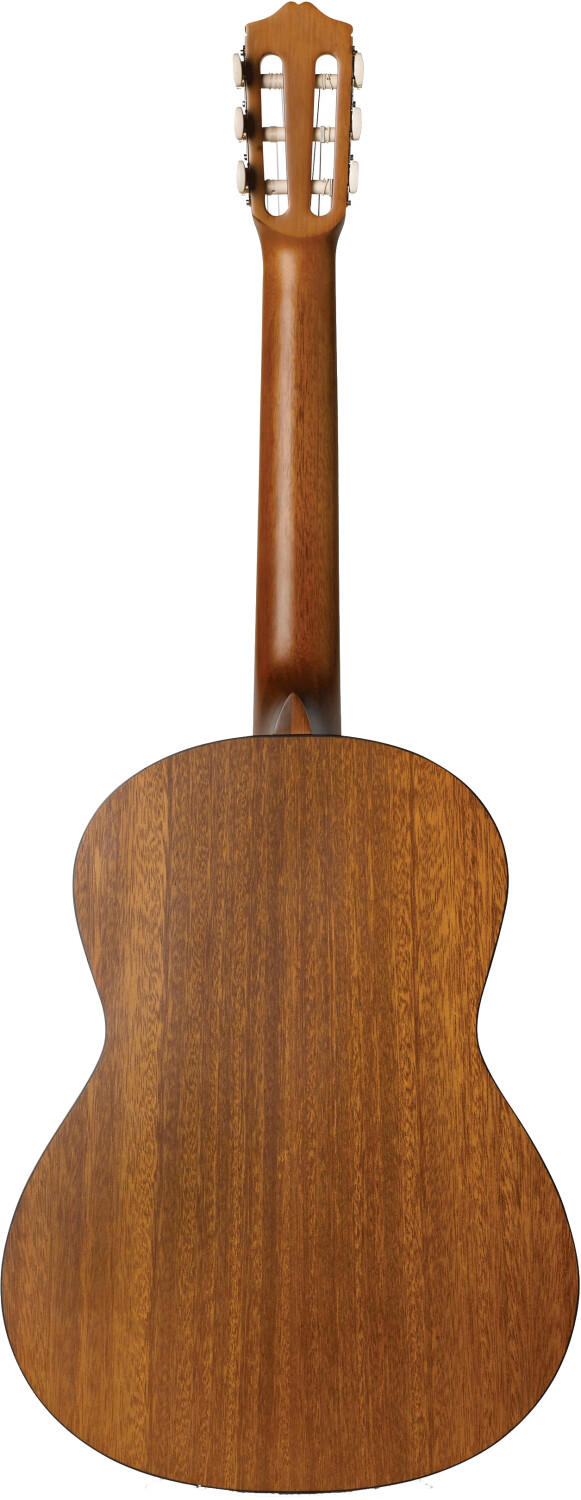
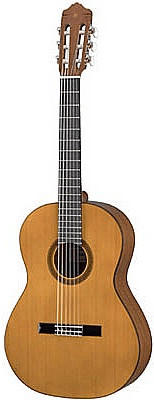
Tuning stability
Ensuring that your guitar stays in tune for extended periods is essential for enjoyable playing experiences. One tip to achieve better tuning stability is to opt for acoustic guitars with solid tops instead of laminated tops. Solid tops generally provide better resonance and stability, leading to improved tuning capabilities over time. One example of an acoustic guitar that offers excellent tuning stability is the Yamaha A-Series A3R. It features a solid Sitka spruce top along with a scalloped bracing design, allowing for a balanced and rich tone while maintaining precise tuning. Another notable option is the Taylor 214ce Deluxe Grand Auditorium, which has a solid Sitka spruce top combined with layered rosewood back and sides. This guitar is known for its outstanding stability and resonance, ensuring optimal tuning reliability.

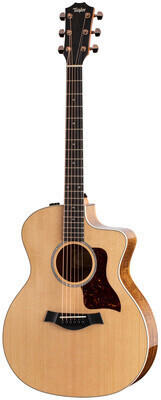
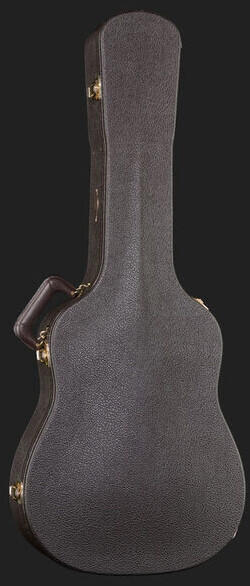
Electronics
Most acoustic guitars come with built-in electronics that allow you to easily amplify and capture the sound of the guitar. One crucial aspect to consider is the type of pickup used in the guitar. There are commonly three types of pickups: piezo, magnetic, and soundboard transducer. Piezo pickups, such as the Fishman Rare Earth Blend and LR Baggs Anthem, offer a natural and balanced tone. Magnetic pickups, like the Fishman Rare Earth Humbucking and Seymour Duncan Mag Mic, deliver a warm and robust sound. Soundboard transducer pickups, found in instruments like the K&K Pure Mini and LR Baggs iBeam, provide an accurate representation of the guitar's overall sound. Additionally, some guitars feature an onboard preamp with tone controls, allowing you to further shape your amplified sound. Examples of acoustic guitars with great electronics include the Taylor 314ce and Martin D-35E.
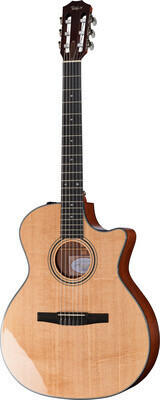
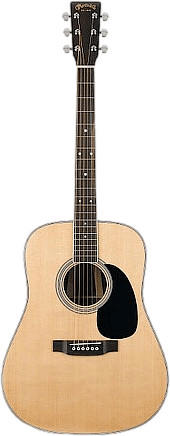
Included accessories
The availability of accessories can greatly enhance your playing experience and save you money in the long run. Look for guitars that come with a protective carrying case, which will safeguard your instrument from scratches and potential damage during transport. A prime example of a guitar that offers this is the Fender CD-60S All-Mahogany Acoustic Guitar which includes a hardshell case to ensure the safety of your investment. Some guitars also come with additional accessories such as straps, picks, and even spare strings. The Yamaha FG800 Solid Top Acoustic Guitar is a great option that comes with a strap and extra set of strings, giving you everything you need to start playing right out of the box.

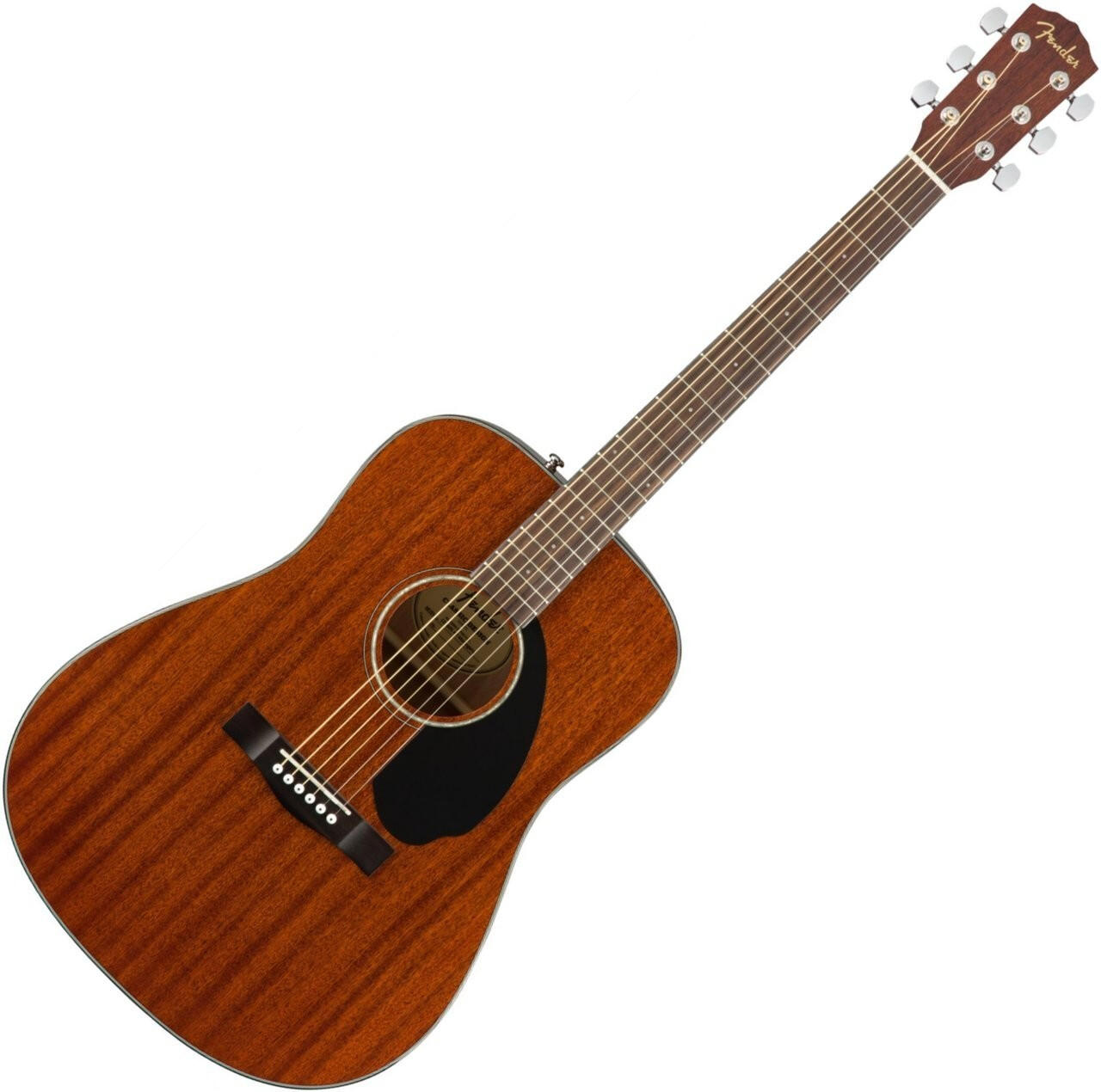

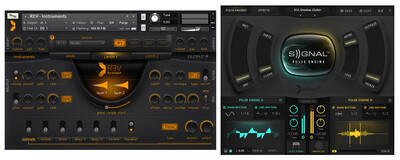
Authenticity (solid wood vs laminate)
Generally, solid wood guitars tend to offer a richer, more resonant sound compared to laminated guitars. Solid wood means that the top, back, and sides of the guitar are made from a single piece of wood, while laminate refers to a thin layer of wood glued to a less expensive material like plywood. One excellent example of a solid wood acoustic guitar is the Martin D-28, which features a solid Sitka spruce top and solid East Indian rosewood back and sides. This combination of premium quality tonewoods contributes to the guitar's full and vibrant sound. On the other hand, a good example of a laminate acoustic guitar is the Fender CD-60S, which has a laminate mahogany top, back, and sides. Although it might not offer the same level of tonal depth as a solid wood guitar, the Fender CD-60S is still a great option for those on a budget who need a reliable instrument for practices or performances. Thus, considering the authenticity of the wood used can guide you towards the acoustic guitar that will provide the sound you desire.

Weight
The weight of a guitar can greatly impact your playing experience and overall comfort. For instance, if you plan on gigging frequently and need a lightweight guitar, the Taylor Big Baby Taylor is an excellent choice, weighing just 4.5 pounds. Another option in the lightweight category is the Gibson J-15. On the other hand, if you prefer a slightly heavier guitar for a more robust sound, the Martin D-28 is a popular choice with its weight of 5 pounds. In terms of even lighter options, the Traveler series from Martin offers guitars weighing as little as 2.75 pounds for ultimate portability. Ultimately, the weight of the guitar should align with your playing style and personal preference for a comfortable playing experience.
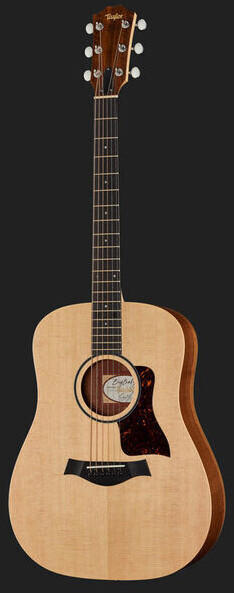


Aesthetics
When it comes to selecting an acoustic guitar, aesthetics play a significant role for many musicians. The appearance of the instrument can inspire creativity and reflect the personality of the player. There are various options available that cater to different aesthetic preferences. For those who prefer a classic and vintage look, the Martin D-28 is highly recommended. This guitar features a solid Sitka spruce top, East Indian rosewood back and sides, and a stylish herringbone top inlay. Another option for an attractive modern look is the Taylor 814ce Deluxe Grand Auditorium. This guitar boasts a beautiful Hawaiian koa back and sides, a V-Class bracing system for enhanced resonance, and intricate abalone inlays on the fretboard. Ultimately, the appearance of the acoustic guitar should align with the individual's personal style and taste.



Portability
One excellent portable option on the market is the Taylor GS Mini Mahogany acoustic guitar. Its compact size and lightweight design make it extremely travel-friendly without compromising on sound quality. Another great choice for portability is the Martin LX1 Little Martin. This travel-sized guitar is great for musicians who need a smaller, more manageable instrument without sacrificing tone and playability. Both these guitars are designed for easy transport and are ideal choices for musicians constantly on the move.
In terms of portability, acoustic guitars can be divided into different segments to suit specific needs. The micro guitars segment caters to those seeking ultra-portability, such as the Yamaha APXT2 or the Traveler Guitar Ultra-Light. These guitars prioritize compactness and weight reduction without compromising sound quality. In the small travel guitars segment, the Fender CT-60S or the Gretsch G9500 Jim Dandy offer good portability with a slightly larger body size for enhanced projection and volume. For those seeking a balance between portability and traditional size, the concert-sized Martin Steel String Backpacker is an outstanding choice, designed with a unique slim body shape to ensure ease of carry without compromising sound quality.
String type
The strings you select can have a significant impact on the sound and playability of the instrument. There are typically two main categories: steel strings and nylon strings. Steel strings, also known as "acoustic" or "western" strings, produce a brighter, twangy tone and are more commonly used in genres like country, folk, and rock. They also tend to be a bit tougher on the fingers due to their higher tension. Some excellent options for steel-string acoustic guitars are the Fender CD-60S and the Yamaha FG800, both having steel strings with phosphor bronze coating for enhanced durability and tonal richness. On the other hand, nylon strings are often referred to as "classical" strings and produce a mellow, warmer tone. They are frequently used in classical and flamenco music. For those interested in trying out a nylon-stringed acoustic guitar, the Cordoba C3M and the Yamaha CGS103A are highly recommended for their quality craftsmanship and great playability.



Play style compatibility (fingerstyle, strumming, etc.)
Different playing styles, such as fingerstyle or strumming, require different qualities in a guitar. For fingerstyle players who prefer a softer touch, a guitar with a smaller body and lighter strings would be an ideal choice. The Taylor 314ce is a great option for fingerstyle players, with its Grand Auditorium body shape and light gauge strings that offer enhanced playability and clarity of tone.
On the other hand, if you're more into strumming and playing with energy, a guitar with a larger body and medium to heavy gauge strings would suit you better. The Martin D-28 is a legendary choice for strummers, thanks to its iconic Dreadnought body shape and heavier strings that can handle aggressive strumming and produce a rich, resonant sound.


Keep in mind that there are other factors to consider when choosing the best acoustic guitar, such as tonewood, build quality, and price range. However, understanding your play style compatibility is a crucial first step in finding the perfect guitar for you.
Skill level (beginner, intermediate, professional)
For beginners, an ideal choice would be the Yamaha FG800 Acoustic Guitar. This guitar offers a solid spruce top and rosewood fingerboard, providing a balanced and rich tone suitable for learning. It also features a comfortable slim neck and great playability, making it ideal for beginners to develop their skills.
For intermediate players looking for an upgrade, the Taylor 214ce Deluxe Grand Auditorium Acoustic-Electric Guitar is a fantastic choice. This guitar combines a solid Sitka spruce top with a layered rosewood back and sides, delivering a versatile and dynamic tone. Its built-in electronics offer professional-grade sound amplification and flexibility for live performances. The guitar also features Taylor's patented neck design, providing excellent playability and comfort.
Professional musicians aiming for superior craftsmanship and tone should consider the Martin D-28 Acoustic Guitar. This guitar is a beloved classic and a go-to instrument for many guitarists. It features a solid Sitka spruce top and solid East Indian rosewood back and sides, producing a deep and resonant sound with exceptional bass response. The D-28 also boasts exquisite appointments such as herringbone top trim, vintage-style fingerboard binding, and an adjustable truss rod for precise setup adjustments.



Other noteworthy options for professionals include the Gibson J-45 Standard Acoustic-Electric Guitar known for its full-bodied tonal spectrum, and the Taylor 714ce Acoustic-Electric Guitar with its impressive blend of tonal warmth and clarity. Remember to consider your skill level when choosing an acoustic guitar, as it will play a crucial role in your overall playing experience.
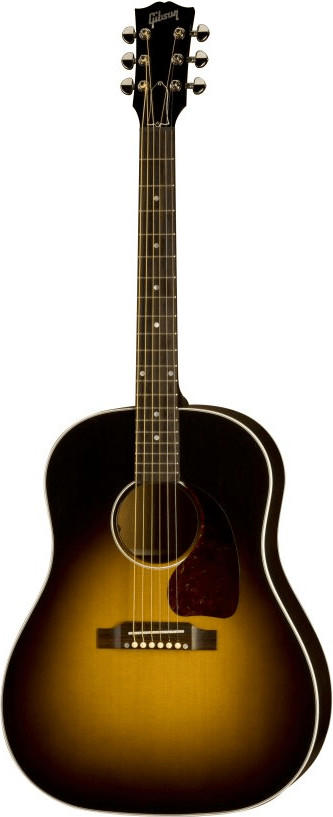

Durability
Look for guitars constructed with high-quality materials like solid wood tops, which tend to be more durable than laminated tops. One such example is the Martin D-28, which features a solid Sitka spruce top and East Indian rosewood back and sides, offering both strength and superior tone.
Another consideration for durability is the neck construction. Guitars with necks made of mahogany or maple tend to resist warping and are more durable in the long run. The Taylor 214ce is an excellent option, as it showcases a solid Sitka spruce top along with a layered koa back and sides. The guitar also boasts a durable Hard Rock maple neck, ensuring stability even in changing environmental conditions.
Additionally, it is worth mentioning the protection that comes with a guitar. When it comes to finding an acoustic guitar that offers durability both on the road and at home, the Gibson J-45 Standard is an exceptional choice. This instrument features a top made of 2-piece Sitka spruce, sides and back crafted from mahogany, and a neck constructed using mahogany as well. Its high-quality built-in LR Baggs Element pickup system ensures durability and reliability during stage performances too.


Remember, durability is crucial for an acoustic guitar, as it ensures longevity and a lifetime of playing pleasure. By considering the materials used and construction techniques, you can select a guitar that will not only withstand the test of time but will also offer impressive sound quality.
Guitar case
A good guitar case will not only protect your instrument but also provide convenience when transporting it. There are several types of guitar cases available, such as hard cases, soft cases, and gig bags.
For those who prioritize maximum protection, a hard case is the go-to option. The 'SKB 1SKB-20' is a highly recommended hard case due to its durable construction featuring molded ABS plastic. It offers a plush-lined interior with a neck cradle to keep your guitar secure during transportation. Another popular choice is the soft case, which provides a balance between protection and portability. The 'Gator Cases Gig Bag' is a reliable option with 20mm padding and a reinforced interior to safeguard your guitar from minor bumps. Finally, gig bags offer a lightweight and convenient solution for avid travelers. The 'Fender FA610 Dreadnought Gig Bag' is a well-regarded gig bag that incorporates a water-resistant exterior and 10mm padding for a comfortable and hassle-free transporting experience.
Availability of spare parts
It is crucial to choose a guitar that has easily accessible and readily available spare parts, as this ensures that you can easily find replacements in case any components break or wear out over time. Some notable examples of acoustic guitars that offer a wide range of readily available spare parts are the Fender CD-60S and the Yamaha FG800. Both of these guitars are highly regarded for their quality and performance, and they come with a variety of spare parts and accessories that can be easily found in most music stores. Additionally, these guitars belong to the mid-range segment, making them affordable options while still providing excellent availability of spare parts.
Soundhole design or decoration
The design and decoration of the soundhole can vary significantly and can affect both the aesthetic appeal and the sound produced by the guitar. For example, a traditional round soundhole design, like the one found on the Taylor 214ce Deluxe Grand Auditorium Acoustic-Electric Guitar, provides a balanced, versatile tone with well-defined highs and strong lows. On the other hand, guitars like the Fender Sonoran SCE Acoustic-electric Guitar feature a Stratocaster-style soundhole, which adds a unique visual flair while contributing to a bright and punchy sound.
Another category of soundhole design is the rosette. The rosette is the decorative trim around the soundhole that often adds personality to the guitar. Some guitars, like the Martin D-28 Standard Dreadnought Acoustic Guitar, feature an intricate abalone rosette, while others, like the Yamaha FG800 Solid Top Acoustic Guitar, have a simpler rosette design. The choice of rosette design typically comes down to personal preference and can range from understated elegance to bold and eye-catching patterns.

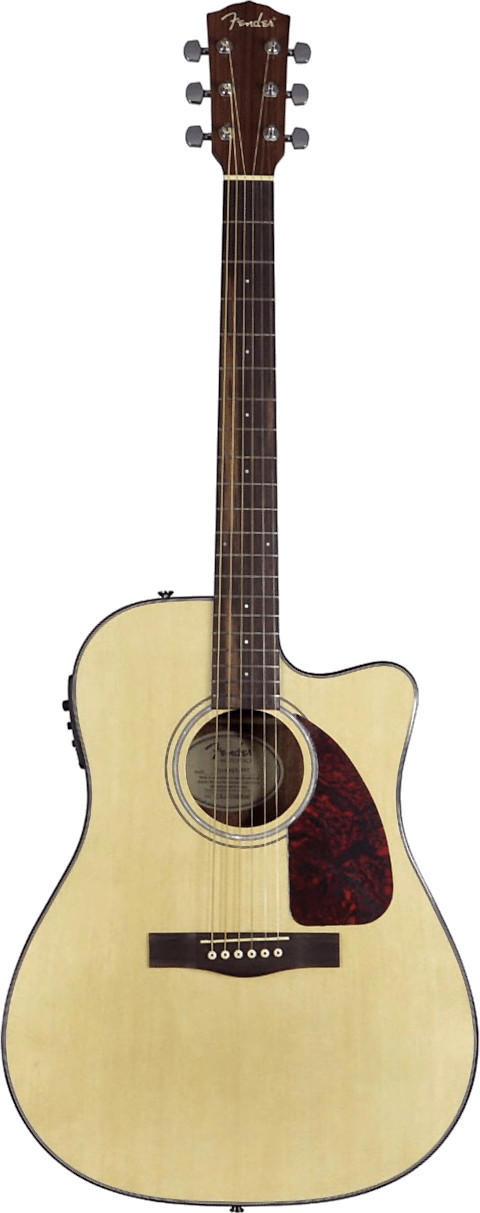


Price
Setting a budget will help narrow down the options and ensure that you get the most value for your money. In the market, there are different segments of acoustic guitars based on their price range. In the entry-level segment, the Fender FA-115 is a reputable choice, featuring a laminated spruce top, mahogany back and sides, and a comfortable C-shaped neck. Moving up the price ladder, the mid-range segment offers guitars like the Taylor Academy 10, which boasts a solid Sitka spruce top, layered sapele back and sides, and a sleek armrest for enhanced playing comfort. At the higher end, the premium segment includes guitars like the Martin D-28, renowned for its solid spruce top, East Indian rosewood back and sides, and an advanced scalloped bracing pattern for optimal resonance. Whether you're just beginning your musical journey or a seasoned player, there are acoustic guitars available at various price points that cater to all budgets and preferences.
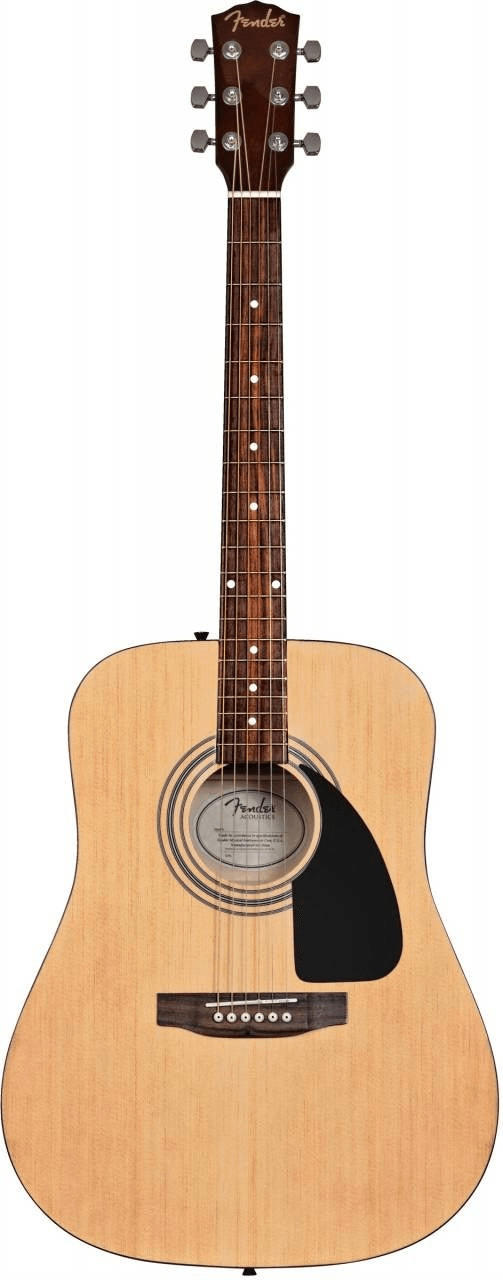
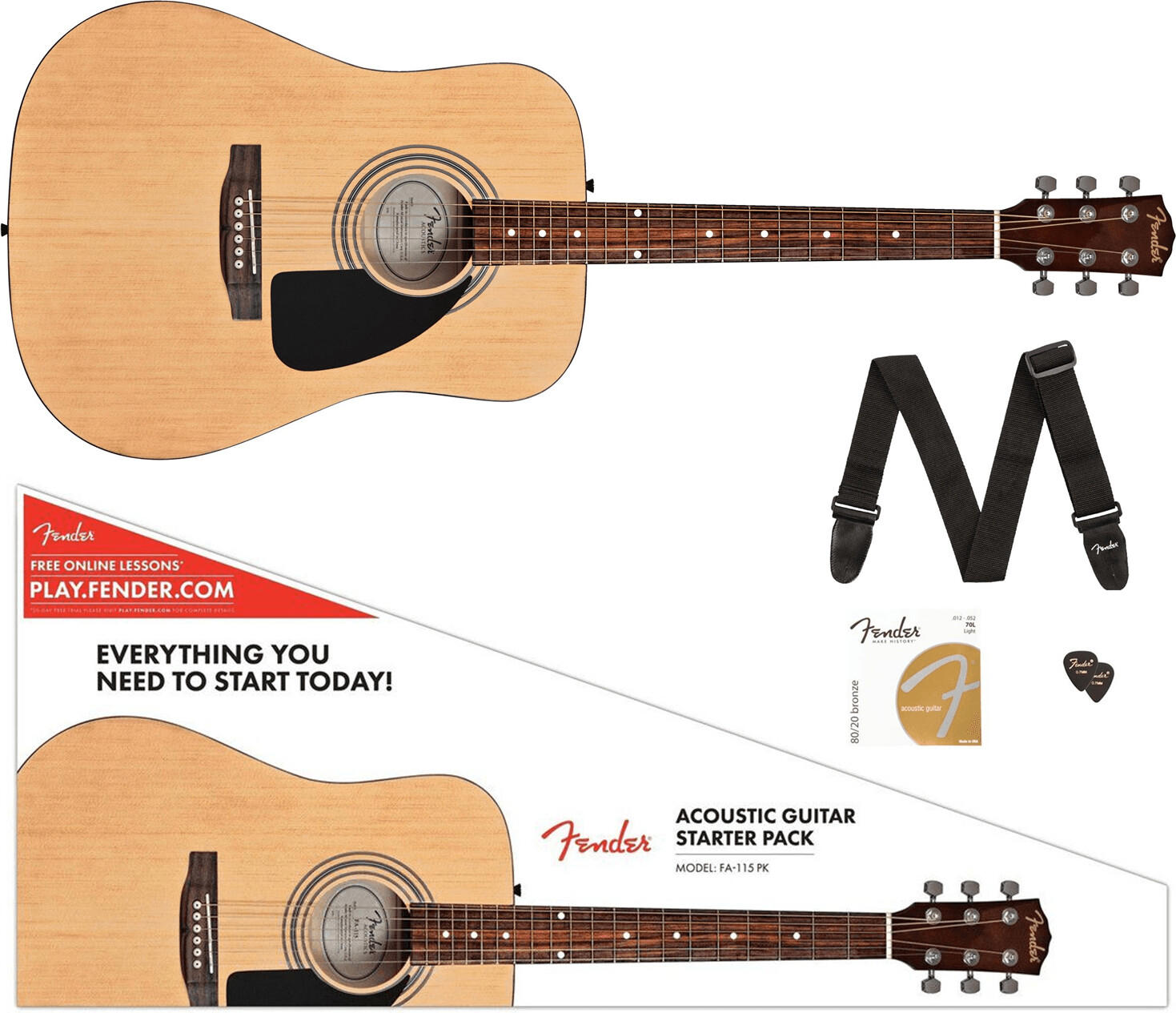

Variety of brands
Each brand brings its own unique qualities and features to the table, making it essential to consider which brand best aligns with your musical preferences and playing style. Some renowned brands in the acoustic guitar market include Taylor, Martin, and Gibson, to name a few.
Taylor guitars are lauded for their exceptional playability and tone. With innovations like their groundbreaking Expression System 2 electronics, Taylor guitars offer incredible clarity and versatility. The Taylor 314ce is a standout example, boasting a solid Sitka spruce top, solid sapele back and sides, and a versatile Grand Auditorium body shape.
Martin guitars, on the other hand, are renowned for their rich and balanced sound. They are often characterized by their distinctive tonewoods, including solid spruce tops and mahogany or rosewood back and sides. As an example, the Martin D-28 is an iconic model known for its booming projection and warmth. With a solid Sitka spruce top and solid East Indian rosewood back and sides, it has become a staple in the acoustic guitar world.
Gibson is a brand famed for its craftsmanship and legendary sound. Their guitars are celebrated for their high-end quality and are frequently used by professional guitarists worldwide. The Gibson Hummingbird is a classic model that features a solid Sitka spruce top, mahogany back and sides, and rich, resonant tones. Its striking vintage appearance and renowned Gibson quality ensure it stands out in a crowded market.


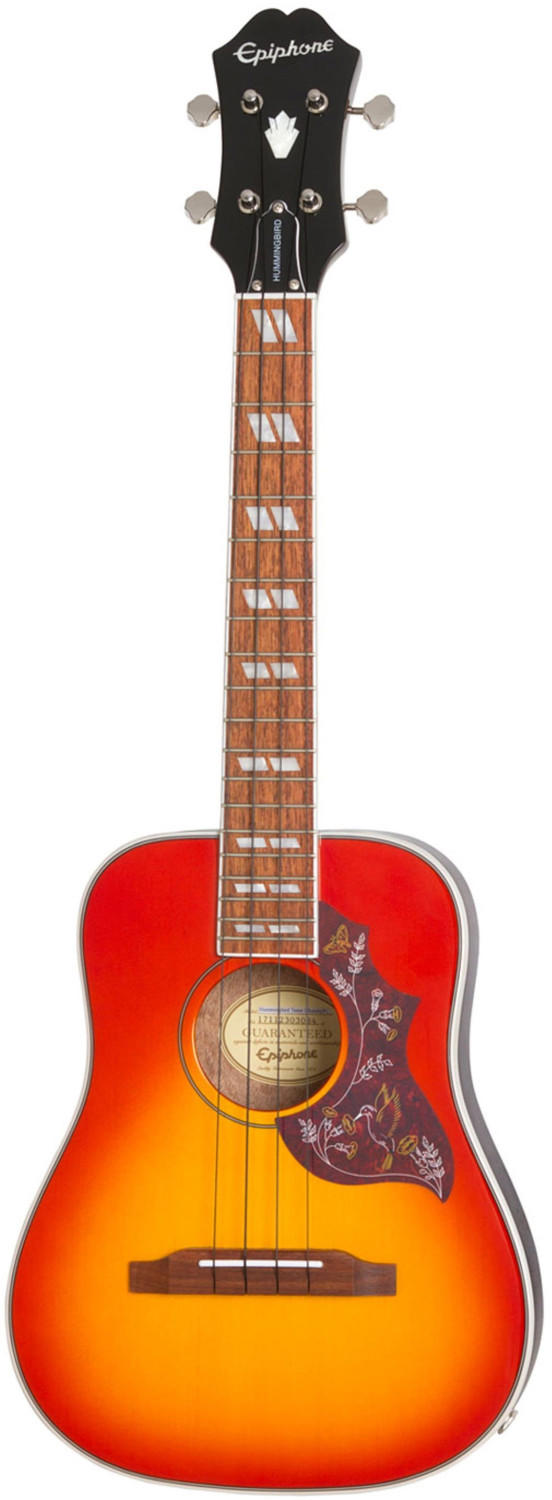
These are just a few examples of the outstanding acoustic guitars available from the top brands in the market. By considering the pros and cons of different brands, innovations, and the specific features provided by each model, you can make an informed decision that best suits your musical needs.